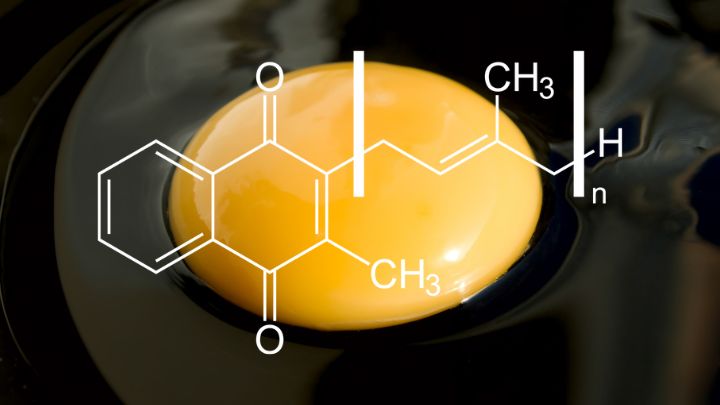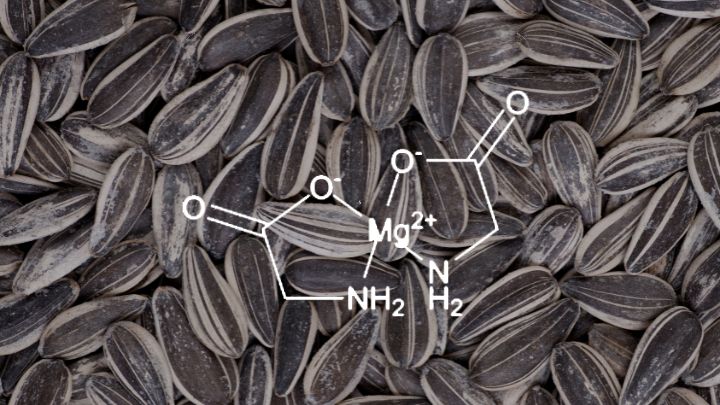Millions of people struggle with balancing blood sugar levels daily. Are you looking for ways to support your blood sugar and metabolism without giving up the foods you love?
Whilst this isn’t a ticket to indulge in unhealthy habits, nature provides us with powerful elements that work wonders in the body—helping not just with blood sugar control but also with longevity and overall health.
After all, at our core, we’re made of atoms, and the right nutrients can significantly impact how we age and how long we stay healthy.
One such element is chromium—specifically in its most effective form, chromium picolinate.
Known for supporting metabolism and insulin function, it’s also gaining recognition for its role in promoting long-term health and increasing healthspan.
Let’s dive into how chromium picolinate supplement works and how it might just be the missing link in your quest for a longer, healthier life.
In this article
FREE anti-ageing guide

- Master the science of rejuvenation.
- Apply proven tips to turn back the clock.
- Transform your health with top longevity specialists.
What is chromium?
Chromium, specifically in its trivalent (+3) form, is a trace element found naturally in many foods and is available as a dietary supplement [1].
There’s also hexavalent (+6) chromium, a toxic by-product of stainless steel production and other industrial processes, but here we’ll focus on the safe and beneficial trivalent form.
Chromium plays a role in how your body metabolises carbohydrates, fats, and proteins, mainly by helping insulin do its job.
Scientists suggest that chromium binds to a protein to form chromodulin, a substance that boosts insulin’s effectiveness. It may also have antioxidant properties.
Most chromium in the body binds to proteins in the blood, and it tends to accumulate in the liver, spleen, soft tissues, and bones.
Chromium is mainly excreted in urine, which is a good indicator of recent intake, but it’s not the best measure of overall chromium levels in the body.
Hair analysis may offer clues about long-term intake, but no reliable method exists to accurately measure chromium deficiency.
Sources of chromium
Chromium can be found in a wide variety of foods, including meats, whole grains, fruits, vegetables, nuts, spices, brewer’s yeast, beer, and wine.
Still, the actual chromium content in these foods varies greatly, depending on factors like:
- local soil conditions
- water quality
- agricultural methods
- manufacturing
For example, the chromium levels in different samples of oatmeal can vary as much as 50-fold due to differences in growing and processing methods.
Besides, some foods might absorb chromium from stainless steel equipment during food processing or from pots and pans during cooking.
It’s worth noting that most dairy products and foods high in sugar, like sucrose and fructose, tend to be quite low in chromium.
For infants, human milk contains around 0.25 mcg/L of chromium, though this number can vary significantly. Studies in Europe have shown chromium concentrations in breast milk ranging from 0.14 to 10.8 mcg/L.
Chromium absorption from food is relatively low, with an estimated absorption rate of 0.4% to 2.5%. Certain substances like vitamin C (ascorbic acid) and aspirin can boost chromium absorption, whilst others, such as oxalates and antacids, can inhibit it.
Below is a guide to the chromium content found in various foods:
| Food | Micrograms (µg) per serving | % Daily Value (DV) |
| Grape juice, 1 cup | 7.5 | 21% |
| Ham, 3 ounces | 3.6 | 10% |
| English muffin, whole wheat | 3.6 | 10% |
| Brewer’s yeast, 1 tablespoon | 3.3 | 9% |
| Orange juice, 1 cup | 2.2 | 6% |
| Beef, 3 ounces | 2.0 | 6% |
| Lettuce, 1 wedge (5 oz) | 1.8 | 5% |
| Turkey breast, 3 ounces | 1.7 | 5% |
| Barbecue sauce, 1 tablespoon | 1.7 | 5% |
| Tomato juice, 1 cup | 1.5 | 4% |
| Apple, with peel, 1 medium | 1.4 | 4% |
| Green beans, ½ cup | 1.1 | 3% |
| Banana, 1 medium | 1.0 | 3% |
| Whole wheat bread, 1 slice | 1.0 | 3% |
| Ketchup, 1 tablespoon | 1.0 | 3% |
| Tomato, 1 medium | 0.9 | 3% |
| American cheese, 1½ oz | 0.8 | 2% |
| Peanut butter, 1 tablespoon | 0.6 | 2% |
| Rice, white, ½ cup | 0.6 | 2% |
| Haddock, 3 ounces | 0.6 | 2% |
| Chicken breast, 3 ounces | 0.5 | 1% |
| Peas, ½ cup | 0.4 | 1% |
| Orange, 1 medium | 0.4 | 1% |
| Spaghetti, 1 cup | 0.3 | 1% |
| Carrots, raw, 1 medium | 0.3 | 1% |
| Egg, 1 medium | 0.2 | 1% |
| Celery, 1 stalk | 0.1 | 0% |
| Fat-free milk, 1 cup | <0.1 | 0% |
Please note that these values are estimates, as determining the exact chromium content of food can be challenging due to potential contamination during measurement. Also, the FDA has established a Daily Value (DV) for chromium of 35 µg for adults and children aged 4 and above. Foods providing 20% or more of the DV are considered to be high in chromium, but even lower percentage foods can contribute to a balanced diet.
Chromium in supplements
Most multivitamin and mineral supplements contain chromium, typically ranging from 35 to 120 µg. Supplements specifically formulated to contain only chromium are also available, and these often provide between 200 µg and 500 µg, although some offer as much as 1,000 µg.
What are the different types of chromium supplements?
Chromium is available in several forms within dietary supplements, including chromium picolinate, chromium nicotinate, chromium polynicotinate, chromium chloride, and chromium histidinate.
Why chromium picolinate supplement?
Research suggests that the absorption rate for chromium picolinate is about 1.2%, whilst chromium chloride is absorbed at around 0.4%. Remember, these figures are still comparable to the absorption rates of Chromium from food.
Besides, chromium compounds contain different percentages of elemental chromium.
200µg of highly bioavailable chromium picolinate

- Support healthy weight management.
- Improve your metabolic health.
- Stay energised throughout the day.
What are the benefits of chromium picolinate supplement?
1. Can chromium help with diabetes?
The answer is not clear yet. Since Chromium may enhance insulin action, researchers have studied whether increasing Chromium intake could reduce the risk of impaired glucose tolerance or diabetes.
One key study from 1997 involved 180 adults with type 2 diabetes. Participants were given either 100 µg, 500 µg of chromium (as chromium picolinate), or a placebo for four months.
Those taking 1,000 µg/day had lower fasting blood sugar (7.1 mmol/L vs. 8.8 mmol/L with placebo) and better results after a glucose challenge. HbA1c, a marker of long-term blood glucose control, also dropped to 6.6% compared to 8.5% in the placebo group.
But, later studies have been inconsistent.
A 2019 review of 58 trials found only slight improvements in blood sugar and HbA1c levels in people with diabetes, and the benefits for healthy individuals were unclear. Some research suggests chromium might help those with severe insulin resistance, but this is not definitive.
Thus, American Diabetes Association (ADA) does not recommend Chromium supplements for treating diabetes due to the lack of consistent evidence.
More research is underway to identify other groups who may benefit, such as those with insulin resistance or poor glycaemic control.
This is because Chromium still has the ability to significantly lower blood sugar levels, as shown in some studies.
2. Can chromium help with metabolic syndrome?
Metabolic syndrome is a collection of risk factors, including:
- abdominal obesity
- high triglycerides
- low HDL (good) cholesterol
- high blood pressure
- elevated fasting blood sugar
Together, these raise the risk of heart disease, diabetes, and stroke. Since insulin resistance plays a key role in metabolic syndrome, some researchers have explored whether Chromium supplements could be beneficial.
A large study of 3,648 adults aged 20–32 years found an inverse relationship between toenail chromium levels and the incidence of metabolic syndrome over 23 years.
This led some scientists to hypothesise that Chromium supplementation might help those with metabolic syndrome.
But, clinical trials are limited. One trial involving 63 adults with metabolic syndrome gave participants 500 µg of chromium picolinate or a placebo twice daily for 16 weeks.
Whilst chromium supplementation improved the body’s acute insulin response to glucose, it had no impact on long-term markers like HbA1c, insulin sensitivity, body weight, or cholesterol levels.
Similarly, a 2018 trial involving 70 adults with metabolic syndrome and impaired glucose tolerance found that 300 µg of chromium per day for 24 weeks did not affect fasting glucose, HbA1c, waist circumference, blood pressure, or lipid levels.
3. Can chromium help with Polycystic Ovary Syndrome (PCOS)?
Polycystic ovary syndrome (PCOS) is a common hormonal disorder in women of reproductive age, marked by infertility, obesity, abnormal cholesterol levels, high androgens, and increased risks of type 2 diabetes and heart disease.
Given that insulin resistance is a key feature of PCOS, researchers have explored whether chromium supplements might help with blood sugar control and improving lipid profiles.
Several systematic reviews and meta-analyses have evaluated chromium’s impact on PCOS.
One review analysed seven trials involving 351 participants, where chromium doses (200–1,000 µg per day) were taken for 8 to 24 weeks. The results showed no effect on fasting blood sugar, testosterone, or hormone levels, but chromium did reduce body mass index (BMI) by 2.37 kg/m², lower free testosterone levels, and decrease fasting insulin levels by 0.33 milli-IU/mL compared to placebo.
Another review of five trials with 268 women compared chromium (200–1,000 µg daily) with placebo or metformin for 8 weeks to 6 months. Chromium didn’t significantly affect fasting insulin or insulin sensitivity, but two trials showed it reduced insulin resistance.
Another trial noted improved beta-cell function, which helps regulate insulin. But, the overall impact of chromium was small and of uncertain clinical significance.
Whilst chromium shows some promise in reducing insulin resistance and lowering BMI in women with PCOS, further studies are needed.
4. Can Chromium help with dyslipidemia?
Low chromium levels have often been linked with elevated cholesterol. Researchers explored whether chromium supplements could improve blood lipid profiles. This has been tested in different groups, including those with diabetes and polycystic ovary syndrome (PCOS).
In one study, 71 participants with poorly controlled type 2 diabetes took 600 µg of chromium picolinate daily for 4 months. The results showed no impact on total cholesterol, HDL (good) cholesterol, LDL (bad) cholesterol, or triglyceride levels compared to placebo.
Another 8-week study in 40 women with PCOS found that 200 µg/day of chromium significantly lowered triglycerides by 19.2 mg/dL and total cholesterol by 15.3 mg/dL compared to placebo.
Overall, meta-analyses of people with diabetes and PCOS suggest that chromium has little effect on total or LDL cholesterol, but it may increase HDL levels and reduce triglycerides.
Still, further research is needed to determine if chromium can significantly help with dyslipidemia, especially across larger populations.
5. Can chromium help with weight loss?
Chromium’s potential to enhance insulin action has led to the theory that it may reduce fat storage and increase muscle mass.
Some early studies also suggested that chromium might reduce appetite and cravings, sparking interest in its use for weight loss and body composition improvement.
A 2019 meta-analysis of 21 trials, involving 1,316 participants, found that chromium supplementation (200–1,000 µg/day) resulted in small, but statistically significant reductions in weight (0.75 kg), BMI (0.40 kg/m²), and body fat percentage (0.68%) compared to placebo.
But, it did not significantly affect waist circumference or waist-to-hip ratio. Other reviews also found similar small reductions in weight. Whilst chromium supplementation—particularly chromium picolinate—might lead to modest reductions in body weight and fat, the actual impact on overall health and body composition is minimal and of limited clinical significance.
6. Can chromium help with depression?
Chromium picolinate has been explored for its potential to alleviate symptoms of atypical depression, with some studies suggesting promising effects, particularly in reducing carbohydrate cravings and stabilising appetite.
In one pilot study, 70% of patients with atypical depression treated with chromium picolinate met the responder criteria, compared to none in the placebo group.
Other research reported improvements in specific symptoms, such as increased appetite, reduced carbohydrate cravings, and more stable emotional patterns throughout the day.
The potential mechanisms behind chromium’s antidepressant effects include enhancing insulin sensitivity, downregulating 5HT2A receptors, and modulating serotonin levels in the brain.
Animal studies have also indicated that chromium picolinate can increase brain serotonin concentrations and lower corticosterone levels—both associated with alleviating depression and anxiety.
There is some evidence that chromium picolinate might also benefit those with binge eating disorder, reducing depression symptoms and the frequency of binge eating episodes.
Furthermore, chromium has shown potential in augmenting the effects of traditional antidepressants in certain cases of dysthymic disorder, leading to remission in some patients.
While these findings are promising, the overall research is still limited. Larger, more robust trials are needed to fully understand chromium’s role in depression treatment and to confirm its effectiveness across broader populations.
7. Can chromium help with heart health?
Chromium picolinate, known for supporting glucose metabolism, may also benefit heart health, particularly in people with cardiovascular risk factors linked to metabolic conditions.
Research shows chromium picolinate can improve heart performance by lowering blood pressure, reducing heart enlargement, and enhancing antioxidant defences. This helps protect the heart from oxidative stress, a key factor in heart disease.
Plus, chromium reduces inflammation markers like CRP and improves blood vessel function by increasing nitric oxide (NO), which aids in better blood flow.
Whilst it doesn’t directly affect heart muscle structure, chromium picolinate’s ability to enhance glucose metabolism and reduce inflammation supports overall cardiovascular health.
Its benefits are most notable in improving vascular health and managing metabolic risk factors, making it a useful supplement for heart health, especially in metabolic conditions.
Chromium deficiency
Chromium deficiency is rare in industrialised countries and typically occurs in people receiving long-term intravenous nutrition (TPN).
In some cases from the 1970s and 1980s, patients on TPN experienced symptoms like high blood sugar, nerve pain, weight loss, and confusion. These issues were resolved with high doses of chromium, although it’s unclear whether the deficiency was the direct cause.
Healthy individuals are unlikely to develop chromium deficiency, as no specific symptoms have been identified. Chromium is routinely added to TPN solutions today, at levels much higher than what is typically absorbed from a regular diet.
If you suspect a deficiency, symptoms to watch for include glucose intolerance, elevated blood sugar, numbness in extremities, and confusion. Diagnosis and treatment should always be guided by a healthcare provider, who can recommend appropriate chromium supplementation if necessary.
How does chromium picolinate work in the body?
- Improves insulin sensitivity
Chromium enhances the action of insulin by boosting insulin receptor signalling, particularly in people with insulin resistance. It helps cells better absorb glucose, improving blood sugar regulation. - Supports glucose metabolism
Chromium increases insulin-stimulated activity in muscles, allowing for more efficient glucose disposal. This is more evident in insulin-resistant folks, whilst its effects might be minimal in healthy people. - Regulates lipid metabolism
In some studies, chromium reduces triglycerides and increases HDL (good cholesterol), helping to improve lipid profiles. These effects are primarily seen in those with metabolic disorders. - Potential impact on body composition
Chromium may promote healthy weight management. Studies show little effect on body fat or muscle mass.
Who can benefit from taking chromium picolinate supplements?
Chromium picolinate plays a vital role in regulating insulin sensitivity and improving glucose metabolism. With the latest advancement in science and technology, we can now reap the benefits of this element quite easily.
Our Stabiliser offers a revolutionary way to keep your blood sugar in check whilst still enjoying the foods you love.
Real-time control: Lower glucose spikes by 40%

- 200µg of chromium picolinate.
- Support healthy weight management.
- Improve your metabolic health.
- Stay energised throughout the day.
Powered by a unique blend of Reducose®, Berberine, and Chromium Picolinate, it works by slowing and blocking the absorption of carbs during meals.
This not only flattens blood sugar spikes, but also prevents the dreaded “sugar crash” that leaves you feeling tired and sluggish after eating.
Plus, by improving insulin sensitivity, the Stabiliser can also support healthy weight management and reduce your risk of developing metabolic diseases as you age.
Why the Stabiliser is a game-changer:
- Blocks up to 40% of carbs: Thanks to Reducose®, you can reduce carbohydrate absorption while eating.
- Maintains stable energy: Avoid the highs and lows of sugar spikes and crashes.
- Supports weight management: By boosting insulin sensitivity and encouraging fat metabolism.
- Protects your heart and skin: Lower blood sugar levels reduce the risk of glycation, which can damage collagen and elastin, leading to premature ageing.
Best time to take the Stabiliser
For best results, take the Stabiliser just before a carb-heavy meal—no need to wait, as the effects are immediate.
Simply take 1 capsule before two meals or snacks that contain carbs or sugar, with a maximum of 2 capsules per day.
The Stabiliser is particularly helpful when dining out or ordering takeaway, where dishes often have a higher glycaemic load, such as pizza, sushi, or desserts.
Side effects of chromium picolinate supplement
Although no severe side effects or overdoses of chromium picolinate have been widely reported, it’s important to exercise caution, as supplements on the market come in varying dosages.
Some may not be as safe, especially when taken in excess.
Common side effects (rare):
- Headache
- Sleep problems
- Mood changes or irritability
- Mild hypoglycaemia (low blood sugar), though unlikely caused by chromium alone
Severe side effects (rare case reports):
- Muscle breakdown
- Skin inflammation
- Low iron levels
- Low platelet count
- Liver or kidney problems
- Unintended weight loss
- Hives, swelling, difficulty breathing
- Trouble concentrating, balance problems, coordination difficulties
- Liver problems (nausea, upper stomach pain, dark urine, pale stools, jaundice)
Most severe side effects are based on individual case reports, and there’s not enough evidence to confirm that chromium picolinate directly causes these issues.
Reputable supplements are generally considered safe, but any adverse effects should be reported to your local health authority.
Whilst the Food and Nutrition Board acknowledges potential risks from high chromium intake, no official upper limit has been set due to limited data.
Always consult a healthcare provider before starting chromium picolinate supplements and report any side effects to your local health authority.
FAQs
1. Is chromium picolinate good for weight loss?
Chromium picolinate may have a minor effect on weight loss, but the evidence is limited. Some studies show small reductions in body weight, but the changes are often too minimal to be clinically significant. Always consult a healthcare professional before using it for weight loss purposes.
2. Can chromium picolinate help with diabetes?
Chromium picolinate may help improve blood sugar control in people with type 2 diabetes by enhancing insulin sensitivity. However, its effectiveness varies, and it should not replace prescribed medications. Always speak to your doctor before using it to manage diabetes.
3. How does chromium picolinate affect cholesterol levels?
Some studies suggest chromium picolinate may help reduce triglycerides and improve HDL (good cholesterol) levels, especially in individuals with metabolic disorders. However, its impact on cholesterol levels in healthy people is less clear and often insignificant.
4. What is the difference between chromium picolinate and other forms of chromium?
Chromium picolinate is a form of chromium that is bound to picolinic acid, which is believed to enhance its absorption in the body. Other forms, like chromium chloride or chromium nicotinate, may be less bioavailable, meaning they are not as easily absorbed.
5. What’s the best time to take chromium picolinate?
Chromium picolinate can be taken at any time of day, but it is often recommended to take it with meals to improve absorption and reduce the risk of stomach upset.
6. Can you take too much chromium picolinate?
Yes, taking too much chromium picolinate can lead to side effects such as headaches, nausea, dizziness, and in rare cases, liver or kidney issues. Always follow the recommended dosage and consult your doctor if you’re unsure.
Stabilise your glucose levels with expert advice

- Learn how to reduce blood sugar spikes.
- Discover how to optimise metabolic health.
- Easy-to-implement tips that millions are following.
References
















